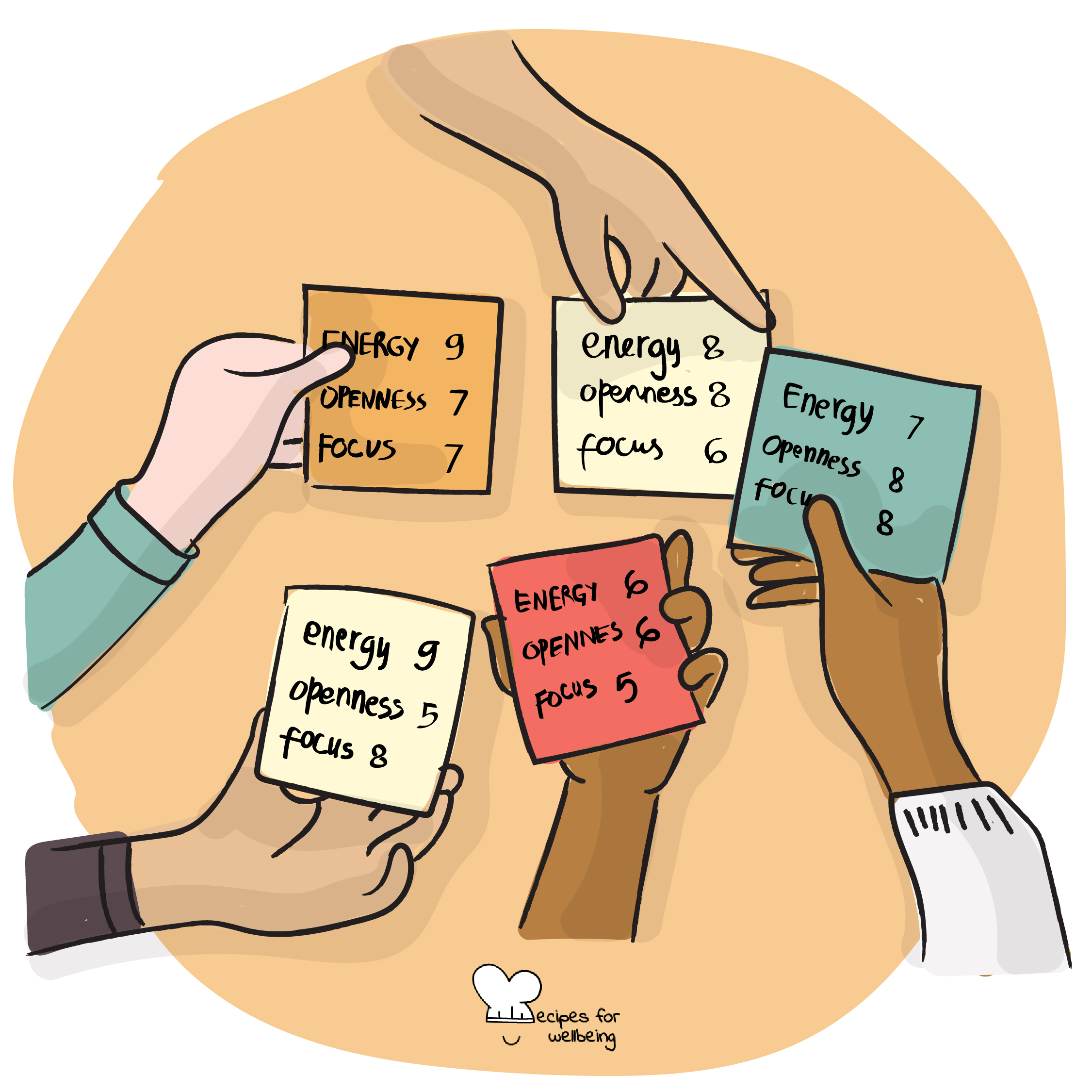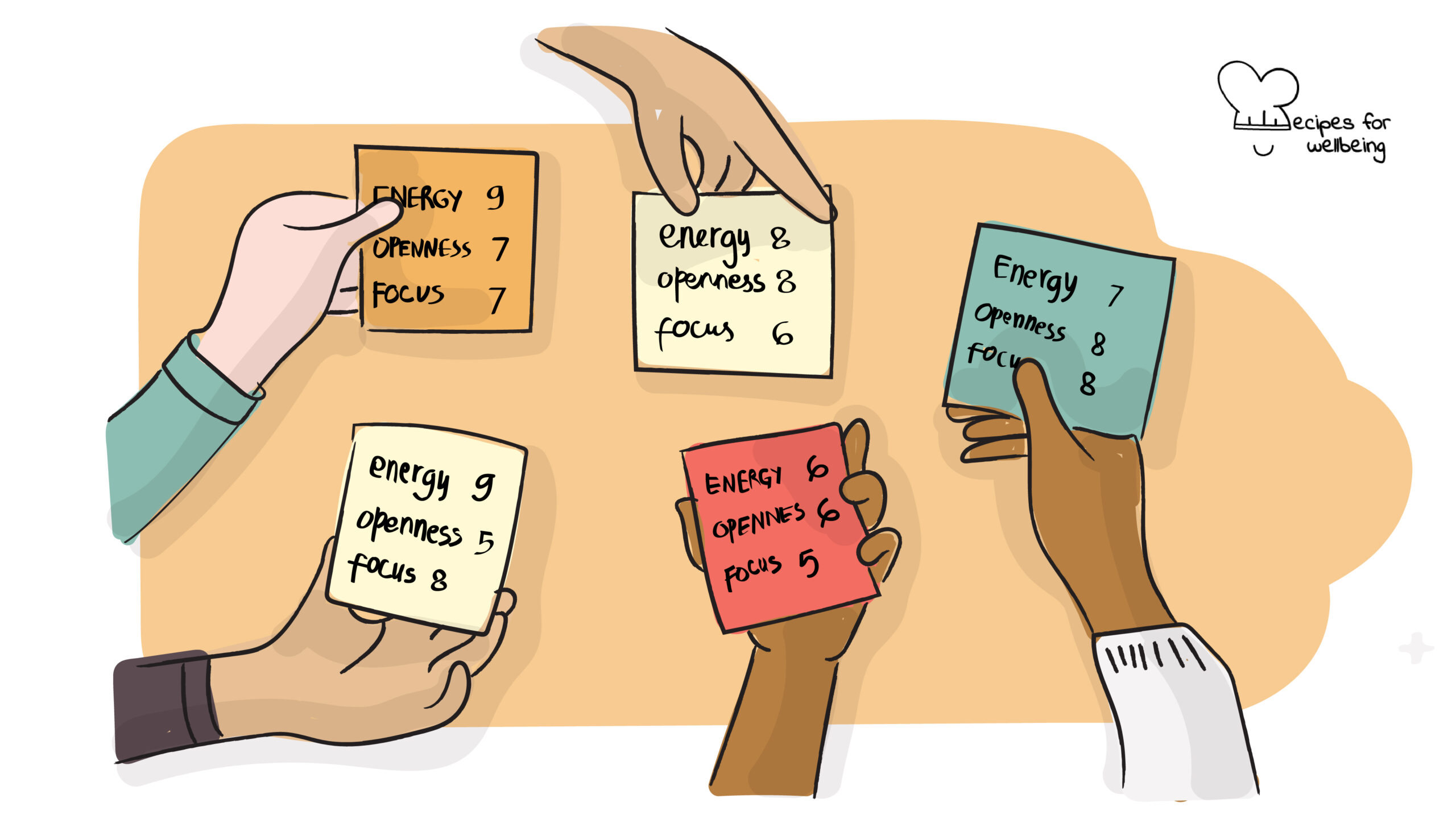
EQ check-in
The extent to which you are able to transform your ‘self-concern’ into ‘other-concern’ will determine your effectiveness in getting others to follow along. ―Anonymous
👥 Serves: 11-25 people, 2-10 people, 26-40 people
🎚 Difficulty: Easy
⏳ Total time: 11-30 minutes
🥣 Ingredients: Pens (1 per participant), sticky notes (1 per participant), “Executive EQ: Emotional Intelligence in Leadership and Organizations” book by Dr Robert K. Cooper and Ayman Sawaf (if you’re curious to find out more about it!)
🤓 Wholebeing Domains: Awareness, Community, Liberatory Learning, Radical Care
💪 Wholebeing Skills: Check-in, Emotional intelligence, Empathy, Honesty, Listening, Openness, Reflection, Relating to Others, Self-awareness

EQ check-in
📝 Description
A quick check-in practice to foster emotional intelligence in a group.
In the past few centuries, the dominant approach to education, and therefore to the workplace, has been on developing, evaluating, and rewarding pupils – and workers – on the basis of their IQ, or intelligence quotient. Whilst IQ plays an important role in how we perform in life, it is not the only “metric” we should take into consideration as human beings. More recently, intelligences such as EQ (emotional quotient) and SQ (spiritual quotient) have started to make their way into the dominant discourse. The following practice focuses on fostering people’s EQ.
In Working with Emotional Intelligence, author and science journalist Daniel Goleman, defines emotional intelligence as “the capacity for recognising our own feelings and those of others for motivating ourselves and for managing emotions well in our relationship”. Quite simply, it is about understanding what we want and need; what others want and need; and to use this understanding to manage our own emotions and use them to support others around us in meaningful and mindful ways. Self-awareness and awareness of others. Empathy is another major component of emotional intelligence. Empathic individuals have developed a mindset that asks, “In anything I say or do, am I saying or doing it in a way in which other people will be most responsive to listening to me?” It is at the essence of authentic and empowering leadership.
This quick exercise is an EQ check-in practice we recommend doing with your team at the beginning of a meeting, workshop, or other activity. It allows individuals and groups to develop self-awareness, awareness of others, and empathy by inviting people to reflect on and share their current state of energy, openness, and focus. It has been adapted from Executive EQ: Emotional Intelligence in Leadership and Organizations by Dr Robert K. Cooper and Ayman Sawaf.
•••
This recipe has been featured in our blog post “From self-concern to other-concern” published on tbd* on 25 March 2020.
👣 Steps
Step 1 – EQ self check-in (5’)
Hand out a sticky note (or slip of paper) and a pen to your participants (or ask them to use their phone if you don’t want to use paper). Ask them, on a scale from 1 to 10 (1 = lowest; 10 = highest) to give an honest personal rating to their current energy, openness, and focus.
- Energy: _____
- Openness: _____
- Focus: _____
Step 2 – Group sharing (10’)
Go around the group and ask everyone to share their numbers. Reassure them they do not have to share why they gave those ratings, just share the numbers. You may be surprised at the insights gained by sharing only the numbers. If the group is very large, you may want to split into two or three sub-groups.
Step 3 – In-depth sharing (15’)
[OPTIONAL]: If you would like to deepen the experience, take an extra 15 minutes or so (the exact time will depend on the number of participants you have) and invite participants to share a bit more about the context behind their numbers. We recommend doing this in small groups of 3-4 people so that everyone gets 4-5 minutes each.

